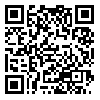Sat, Apr 26, 2025
[Archive]
Volume 35, Issue 1 (1-2021)
Med J Islam Repub Iran 2021 |
Back to browse issues page
Download citation:
BibTeX | RIS | EndNote | Medlars | ProCite | Reference Manager | RefWorks
Send citation to:



BibTeX | RIS | EndNote | Medlars | ProCite | Reference Manager | RefWorks
Send citation to:
Khamseh M E, Abbasi Ranjbar Z, Banazadeh Z, Mirfeizi M, Mohammadbeiki M, Mozafari Z, et al . The Impact of Adding Prandial Insulin to a Basal Based Regimen with Insulin Glargine in Type 2 Diabetic Patients. Med J Islam Repub Iran 2021; 35 (1) :1207-1213
URL: http://mjiri.iums.ac.ir/article-1-5706-en.html
URL: http://mjiri.iums.ac.ir/article-1-5706-en.html
Mohammad Ebrahim Khamseh 

 , Zahra Abbasi Ranjbar
, Zahra Abbasi Ranjbar 

 , Zahra Banazadeh
, Zahra Banazadeh 

 , Mani Mirfeizi
, Mani Mirfeizi 

 , Manouchehr Mohammadbeiki
, Manouchehr Mohammadbeiki 

 , Zohreh Mozafari
, Zohreh Mozafari 

 , Kamnoosh Razazian
, Kamnoosh Razazian 

 , Mojtaba Malek
, Mojtaba Malek 




 , Zahra Abbasi Ranjbar
, Zahra Abbasi Ranjbar 

 , Zahra Banazadeh
, Zahra Banazadeh 

 , Mani Mirfeizi
, Mani Mirfeizi 

 , Manouchehr Mohammadbeiki
, Manouchehr Mohammadbeiki 

 , Zohreh Mozafari
, Zohreh Mozafari 

 , Kamnoosh Razazian
, Kamnoosh Razazian 

 , Mojtaba Malek
, Mojtaba Malek 


Research Center for Prevention of Cardiovascular Disease, Institute of Endocrinology and Metabolism, Iran University of Medical Sciences, Tehran, Iran , malek.m@iums.ac.ir
Abstract: (1456 Views)
Background: Type 2 diabetes (T2D) is a progressive disease that should be managed with insulin in case of oral glucose lowering drugs (OGLDs) failure. If basal insulin is not sufficient, rapid acting insulin will be added before the largest meal. We assessed the impact of adding one prandial insulin to a basal based regimen and insulin glargine in patients with type 2 diabetes to measure the percentage of subjects achieving the HbA1c target by the end of 24 weeks of treatment in routine clinical practice.
Methods: This study was a 24-week observational study of patients with T2D not adequately controlled with OGLDs and basal insulin, for whom the physician had decided to initiate prandial insulin. The study endpoint was assessed at visit 1 (baseline), visit 2 at week 12 (±1 week) and visit 3 at week 24 (±1 week). The percentage of patients who achieved HbA1c targets was assessed at week 24. Statistical analyses were performed using IBM SPSS for Windows v 19 (IBM, Armonk, New York, USA). Logistic regression analysis was used to detect predicting factors of achieving the HbA1c target by week 24. P<0.05 was considered as significant level.
Results: Four hundred and eighteen patients with a mean±SD age of 56.24±9.85 years and a mean±SD duration of diabetes of 12.50±7.16 years were included. The median total daily dose of basal insulin was 24 units, while prandial insulin was started with 6 (4, 10) U/day, titrating up to 10 (8, 18) U/day at week 24. The daily dose of prandial insulin was the only factor that could significantly predict achieving targeted HbA1c by week 24 [OR: 1.04; 95% CI: 1.007,1.079; p-value: 0.019]. At week 24, 96 (22.9%) subjects achieved the HbA1c target with one prandial insulin.
Conclusion: The results of our study suggest that “basal plus therapy” can lead to good glycemic control with a low risk of hypoglycemia and weight gain in patients with type 2 diabetes.
Methods: This study was a 24-week observational study of patients with T2D not adequately controlled with OGLDs and basal insulin, for whom the physician had decided to initiate prandial insulin. The study endpoint was assessed at visit 1 (baseline), visit 2 at week 12 (±1 week) and visit 3 at week 24 (±1 week). The percentage of patients who achieved HbA1c targets was assessed at week 24. Statistical analyses were performed using IBM SPSS for Windows v 19 (IBM, Armonk, New York, USA). Logistic regression analysis was used to detect predicting factors of achieving the HbA1c target by week 24. P<0.05 was considered as significant level.
Results: Four hundred and eighteen patients with a mean±SD age of 56.24±9.85 years and a mean±SD duration of diabetes of 12.50±7.16 years were included. The median total daily dose of basal insulin was 24 units, while prandial insulin was started with 6 (4, 10) U/day, titrating up to 10 (8, 18) U/day at week 24. The daily dose of prandial insulin was the only factor that could significantly predict achieving targeted HbA1c by week 24 [OR: 1.04; 95% CI: 1.007,1.079; p-value: 0.019]. At week 24, 96 (22.9%) subjects achieved the HbA1c target with one prandial insulin.
Conclusion: The results of our study suggest that “basal plus therapy” can lead to good glycemic control with a low risk of hypoglycemia and weight gain in patients with type 2 diabetes.
Keywords: Safety, Treatment Outcome, Diabetes Mellitus type 2, Insulin, Short-Acting, Glycated Hemoglobin A
Type of Study: Original Research |
Subject:
Endocrinology
Send email to the article author
| Rights and permissions | |
 |
This work is licensed under a Creative Commons Attribution-NonCommercial 4.0 International License. |





